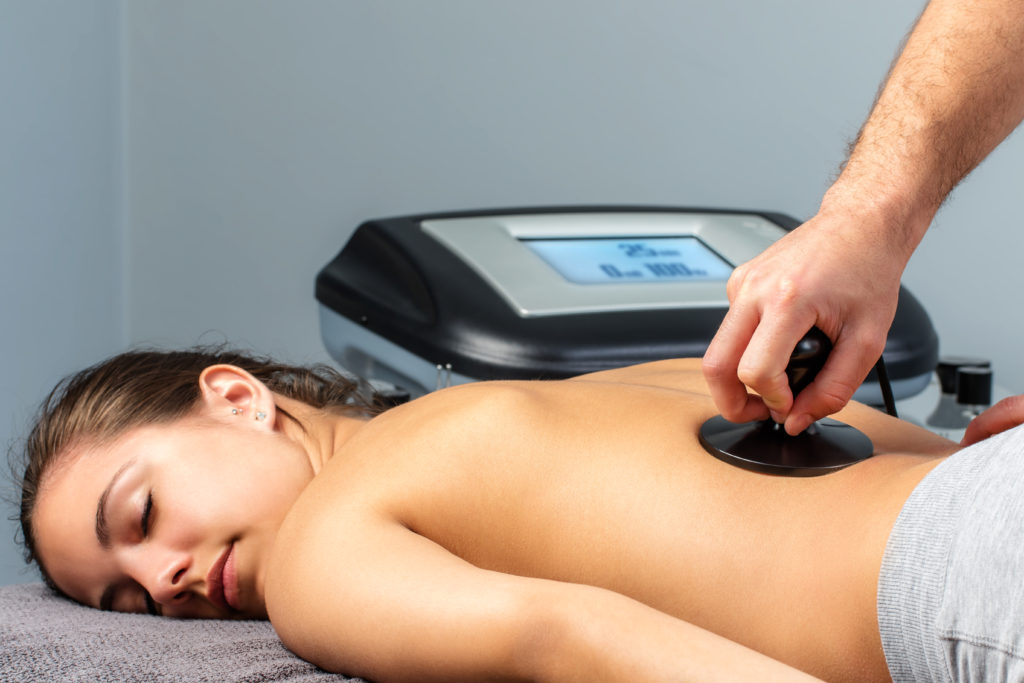What Are Therapeutic Modalities in Chiropractic Care?

Modalities are defined as “any physical agent applied to produce therapeutic changes to biologic tissues; such as light, acoustic, thermal, mechanical or electric energy.” So now that we know what modalities are, let’s talk about some common ones that chiropractors may put to use, such as the chiropractors at AmeriWell Clinics.
Your chiropractor may use an ultrasound, which is a type of deep heat therapy created by sound waves on your soft tissues or joints to create a micro-massage from the sound waves that can reduce swelling, increase your blood flow and decrease your pain, stiffness and muscle spasms.
You may also experience the use of heat and cold therapy at a chiropractor, because ice packs can numb the area and a heat pad or wrap can restore blood flow to the area, which helps promote faster healer.
Massage and soft tissue mobilization may also be used by a chiropractor. Massaging is defined as the rubbing or kneading of the muscles and joints by the hands to relieve tension in those areas, while soft tissue mobilization is an assessment and evaluation and treatment of soft tissues such as ligaments, muscles, tendons, and fascia to create beneficial effects upon the nervous system, musculoskeletal system, lymphatic system and circulatory system.
Therapeutic exercise may be recommended, which is the prescription of specific exercises prescribed by your chiropractor to help with back, neck and extremity issues. These exercises may decrease pain, prevent deterioration of the muscles and promote joint health, and even increase strength, flexibility, range of motion and stability.
Spinal traction is when traction devices are applied to the spine at distinct areas. This helps gently pull the vertebrae and create a decompressing effect, reducing nerve pressure and pain. Other things that a chiropractor may recommend doing are things such as:
- Dietary management, where you are provided with tips to improve your diet to help your back pain, hand pain, etc. Some may even recommend dietary supplements after you’ve had your back adjusted.
- Cold lasers, which produce light without the heat, can help treat injured areas and encourage cell function and healing. Some injuries heat makes things worse, and in that vein of injuries, cold lasers are your friend.
- Transcutaneous Electric Nerve Stimulation, otherwise known as TENS, is a small battery-powered muscle stimulation machine that may be used at home to control the pain. There are a variety of intensities, and this treatment is recommended to help patients get through acute periods of severe pain.
- Interferential Current, or IFC, is a different type of TENS therapy. This is a high-frequency mode that uses electrical impulses to reduce deep muscle or tissue pain. This is a great substitute for patients with sensitivities, because the high frequency has less skin resistance than a standard TENS unit.
Chiropractic medicine is more than just adjustments and dealing with manipulating the spine. Chiropractors have a lot of training that may be relevant to your care, so you should speak with a chiropractor about your care.

